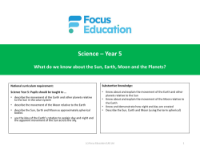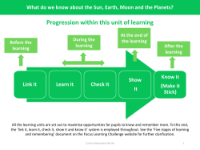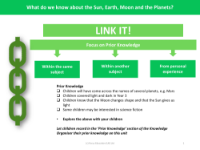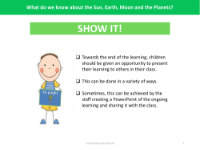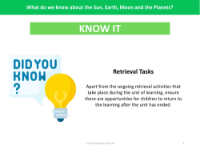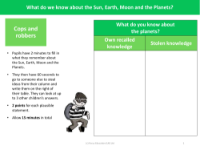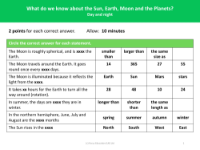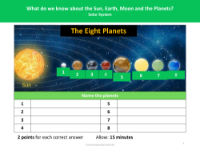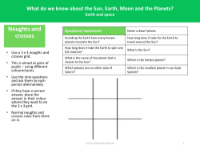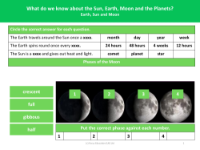Knowledge organiser - Space - Year 5
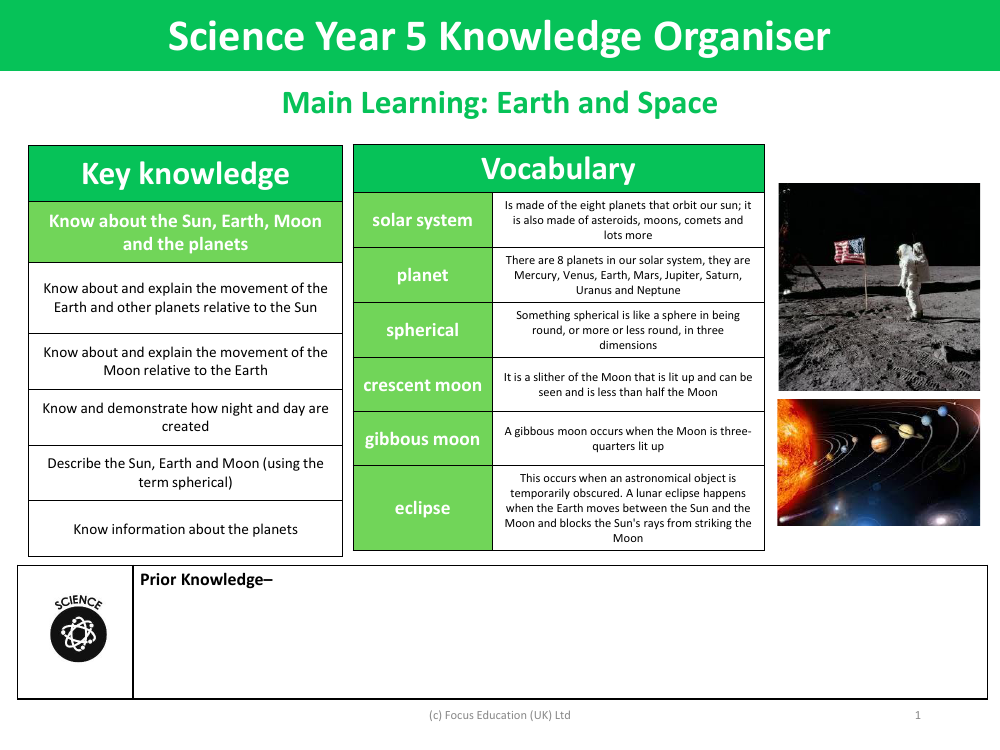
Science Resource Description
The Year 5 knowledge organiser for the topic of Space introduces students to the fundamentals of our solar system and celestial phenomena. The solar system consists of eight planets that orbit our sun, including Mercury, Venus, Earth, Mars, Jupiter, Saturn, Uranus, and Neptune, along with a variety of other cosmic entities such as asteroids, moons, and comets. Students are expected to familiarise themselves with the concept of a planet and understand that these celestial bodies are spherical in shape, meaning they are round in three dimensions, similar to a sphere.
Two particular phases of the Moon are highlighted: the crescent moon, which is a thin sliver of the Moon that is illuminated and visible when less than half of the Moon is lit, and the gibbous moon, which is when the Moon appears three-quarters lit up. Additionally, the organiser covers the phenomenon of an eclipse, which occurs when an astronomical object is temporarily obscured; for example, a lunar eclipse happens when Earth positions itself between the Sun and the Moon, blocking the Sun's rays from reaching the Moon. Key knowledge areas include understanding the Sun, Earth, and Moon system, explaining the movements of the Earth and other planets relative to the Sun, the Moon's orbit around the Earth, and how the rotation of the Earth creates night and day. Students should be able to describe the Sun, Earth, and Moon as spherical objects and possess information about the individual planets within our solar system.
